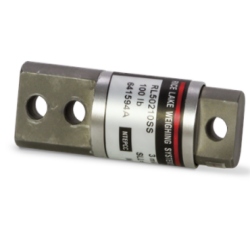
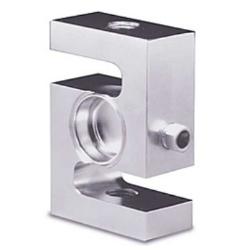








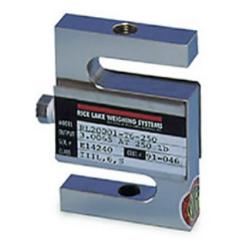




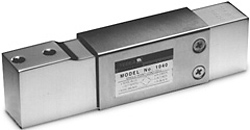






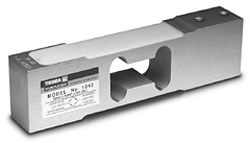
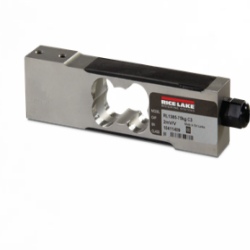




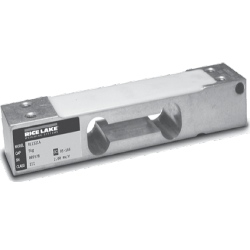

Every scale contains a load cell, which is the object used to measure the force of the load—in other words, the weight. Inside each load cell is a strain gauge influenced by electrical resistance when weight is applied. Put simply, this is what makes scales “work.”
Whether you’re looking for a load cell for a unique application or have one that needs replacing, there’s a Rice Lake solution to meet your requirements. Popular terms to learn more about include things like safe overload, environmentally sealed, mv v output, insulation resistance, 3 mv/v output, etc...
A single-point load cell is designed for lighter-capacity equipment such as bench scales. Single-point load cells are commonly constructed of aluminum and have capacities ranging from 1 to 1,000 kilograms.
A double-ended beam load cell is secured at both ends with the load applied to the center. Construction varies depending on application, with capacities ranging from 1,000 to 200,000 pounds.
A single-ended beam load cell is secured at one end with the load applied to the opposite end. Construction varies depending on application. Capacities range from 1,000 to 20,000 pounds.
An S-beam load cell, or S-shaped load cell, is most commonly used to suspend a weighing vessel with tension applied through stretching. Capacities typically range from 25,000 to 40,000 pounds.
A canister load cell is cylindrical in shape, with force applied vertically in tension or compression. Canisters are ideal for heavy-capacity and environmentally demanding applications and have capacities from 20,000 to 500,000 pounds.
Aluminum load cells are used primarily in single-point, low-capacity applications. The alloy of choice is 2023, due to its low creep and hysteresis characteristics. When compared to tool steel cells of comparable capacities, aluminum load cells have relatively thick web sections. This is necessary to provide the proper amount of deflection in the element at capacity. Machining costs are usually lower on aluminum elements due to the softness of the material. Single-point designs can be gauged for costs similar to those of bending beams.
Load cells manufactured from tool steel elements are some of the most popular cells used today. The cost-to-performance ratio is better for tool steel elements compared to either aluminum or stainless steel designs. The most popular alloys are 4330 or 4340, because they have low creep and hysteresis characteristics. This type of steel can be consistently manufactured to spec, which means that minute load cell design changes don’t have to be made every time a new lot or steel vendor is selected.
Stainless steel load cells are made from 17-4PH (or similar alloy) which is the alloy with the best overall performance qualities of any of the stainless derivatives. Stainless steel cells are more expensive than tool steel load cells. They can be fitted with hermetically-sealed web cavities, making them an ideal choice for corrosive, high-moisture applications. Stainless steel load cells that are not hermetically sealed have little advantage over comparable cells constructed of tool steel, other than a higher resistance to corrosion.
